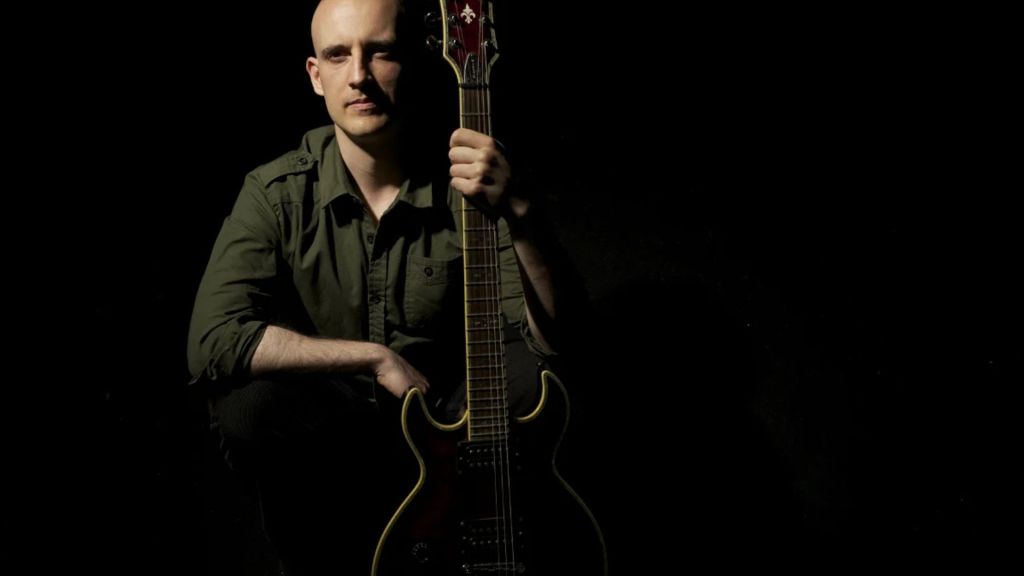In part one of this songwriting series, I shared my perspective on how you can start writing a new song by adopting a “melody first” approach.
But what if you’re the type who leans more towards writing lyrics and have trouble finding melodies to fit your words?
In this article, I’m going to show you a practical way to consciously apply music theory to write music from a “lyrics first” approach.
Before We Get Going
Often times when we’re writing lyrics, we might have an idea of a specific style we’re going for musically. Maybe you’re the lyricist for your band or you’re a solo artist and you have certain parameters that you typically write within musically that best fits your overall message. Makes sense.
What I’m proposing here is that you suspend any expectations of what you think the music SHOULD sound like for your lyrics and instead, engage in a conscious set of steps to allow whatever music comes out to come out even if it’s not what you hoped for. You could follow the steps in this article and wind up writing Johnny Cash inspired Country based off of your death metal band’s lyrics. Who knows? Let it happen! The end result is not really the point here. It’s all about taking action and following through until you come up with something that you’re happy (or at least mildly content) with regardless if it’s a fit for your current project.
What you’ll find is that once you start engaging in this practice regularly, your instincts will sharpen, your confidence will improve and you’ll begin to come up with more and more ideas you’re happy with. It’s a skill like anything else and requires one to get one’s reps in. The more you do this, the better the skill improves and the quicker you’ll be able to react when those inspired “out of the blue” moments come to you.
Here is a Practical Set of Steps You Can Try Out to Begin Creating Melodies to Suit Your Lyrics
Once again, I’m going to be following along and going through these steps with you so if you’d like to see what I come up with to give you some ideas, check out the link at the bottom of this article.
1: Define Your Theme

What is the mood associated with your lyrics? Are they happy and celebratory? Are they more dark and introspective? Maybe they’re somewhere in between? Maybe none of the above? Keep it simple and write down a generic mood and any themes associated with it. In my experience, I equate certain moods with specific tempos.
Example:
Sad song = Slow tempo: 50 – 80 bpm
Happy song = Upbeat tempo: 104 – 167
You can obviously refine things as you see fit but there are a couple of examples to get you going.
I am going to go with the super swampy speed of 51 bpm.
2: Pick Your Song’s Key

Now that we’ve got our mood and theme, let’s decide what key your song’s melody is going to be in. If our lyrics are of a sadder nature, it would make sense to write in a minor key while a happier song demands major chords.
There are always exceptions to this guideline (it’s definitely not a rule) but as a means of quickly getting started, let’s decide on either a Major or Minor tonality for our song.
From there, let’s spell out the scale that’s associated with the key of your song.
(For example: A song in A minor would have the corresponding scale of (A-B-C-D-E-F-G)
Personally, I’m going to go with the key of A Major because that seems to be what I’m feeling today.
Here’s what the scale looks like. (A-B-C#-D-E-F#-G#)
3: Choose a Lyric That’s Four Syllables Long

Out of all the lyrics you’ve written, choose one that equals up to four syllables in length. We want to start small here and not over complicate things so four is a nice even number that leaves enough room for the melody to be developed.
Here’s an example of a recent lyric I wrote for a client to give you an idea.
“Two cast aways.” (Two-cast-a-ways)
This happened to be the first lyric that was sung in the song so having something stripped down and simple helped set the tone.
4: Choose Four Notes From Your Scale
This is the point were we get to make a mess and have fun. Experiment with note choices here and use your ear to steer how things sound. Keep in mind, the exercise is to choose UP to four notes. That said, that doesn’t mean they all have to be different notes. (Implementing repetition can be a great way of coming up with something catchy by the way.) At the end of the day, all you want is to take this one conscious action, spend some time gaming on the idea and let your instincts find something that sounds good to YOU.
For example, here’s a melody I came up with after some experimenting In A Major. E – C# – A – B
Here is how it fits to that lyric “Two cast aways.” (Two-cast-a-ways)
Two (E) cast(C#) a (A) ways (B)
From there, simply repeat this process with the rest of your lyrics if need be or until you start to get in the zone. Once you feel like you’re onto something, let go of the exercise altogether and ride the wave baby!
Speaking of, I have taken my rough lyric and melody of “Two cast aways” and have begun to flesh out some additional rough ideas complete with chords, rhythm, melodies and extra lyrics. It seems to be a romantic based song now that I’ve gotten started. Here’s a rough demo of things to show you what I mean.
That’s all I’ve got for you today! Hope this helps and if you have any questions or would like some guidance on where to go next, be sure to drop me a line here at the following link.
https://pivodio.com/profiles/@AaronCloutier
Thanks for reading!
About PIVODIO™ Coach Aaron Cloutier
Aaron Cloutier is a songwriter, producer, and music educator with over 15 years of experience in the music industry. As a graduate of the Conservatory of Recording Arts and Sciences, Aaron has incorporated his education in audio engineering into his songwriting and production experience, allowing him to work with artists ranging from Ill Nino to the late Sir Christopher Lee. Aaron’s ability to write, record, and produce has also allowed the opportunity to compose music for audio-based companies ranging from Korora Audio, Redwirez, and Ugritone. He lives for the creative process and is eager to share his experience with a new crop of musicians.




Leave a comment